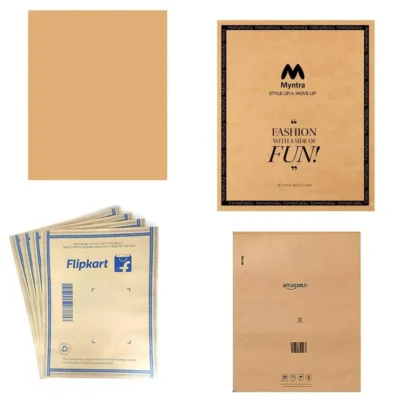No products in the cart.
Blog
Paper Packaging Material
As a result of the ongoing global concerns about the environment, paper packaging material have received more attention because of their recyclable nature which is associated with low cost and friendliness to the environment. Paper materials are up to growing requirements to create sustainable packaging all over the world due to their numerous virtues and outstanding characteristics. In this article, the following benefits of paper packaging materials are discussed and the performance of paper packaging materials in food packaging is reviewed.
Advantages of Paper Packaging Material:
Abundant and Cost-effective:
The raw material for paper packaging involves mostly renewable resources, so it is easy to obtain and inexpensive. It also enables the bulk production of products that will effectively meet the large market needs which is predicted by the vast variety in the raw materials.
Processing Flexibility and Printability:
Paper also shows fine processing characteristics, is acceptable for composite processing and provides excellent printability. It has a smooth texture, which enables high quality and attractive color printing, good for branding and information of products.
Mechanical Strength and Lightweight:
Lightweight though they may be, paper packaging materials are quite strong mechanically so they can satisfactorily protect products and commodities in the package. They afford good bearing function as they act to cushion object during transport without compromising their rigidity.
Hygienic and Safe:
Some of such products include paper bags which are okay for food packaging because they meet the hygiene and safety requirements. Another way that paper processing will satisfy the packaging content requirements is through proper selection of chemicals.
Recyclability and Reduced Environmental Impact:
Paper packaging materials have high recyclability giving support to efforts of decreasing waste and thus reducing pollution impact. Recycling paper again forms the sustainability cycle and for paper recycling issues related to virgin material, using plastic disposal concerns is addressed.
Paper Packaging Material
Printing Performance:
Despite their low cost, both paper and cardboard have remarkable ink penetration and holding features, which make it suitable for packaging printing. Their ability to print smoothly, their size, elasticity, and surface adhesion conspire to make them highly ideal for printing.
Health and Safety:
Strict prospective choice and proper utilization of chemicals in the paper processing stage to meet health and safety classification.
Barrier Performance:
Paper and cardboard products have properties that make them permeable to moisture, gases, light, and greases but surface treatments can improve their barrier property.
Mechanical Properties:
The strength, stiffness, and foldability characteristics of paper and cardboard depend on the material’s characteristics, thickness, technology used in manufacturing, and storage conditions.
Processing Flexibility:
Paper and cardboard have satisfactory process characteristics, making it possible to fold the material and seal it using various techniques.
Conclusion:
Paper based materials offer many benefits and properties that are uniquely positioning them as popular, eco friendly and value for money material for packaging. As environmentally sustainable, recyclable, and possessing performance attributes, paper materials remain a key player in the global trend towards sustainable packaging. In this way, based on the pros and applicabilities of paper packaging materials, it is possible to improve sustainability, as well as the safe protection and changed demand of trading enterprises.

